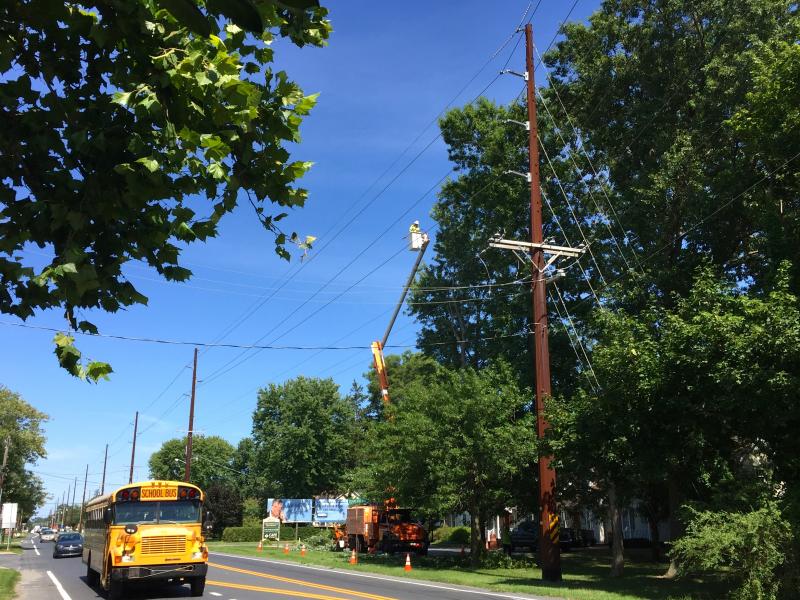Storm season’s upon us; drowning a grim reminder

Two Sundays back, three boats of us lay at anchor behind Cacaway Island, up Lankford Creek, off the lower Chester River, 65 miles or so west of Rehoboth Beach. Playing an eight-handed game of whist on the bridge of the trawler Larry and Allison chartered, we made little headway through the game between conversation and laughter.
As the sun set and darkness closed in, we watched a mid-August Chesapeake storm working its way up the western shore.
Given the day’s 95-degree heat and blanketing humidity that hung on our skin like a full-body poultice thickening our breathing, the storm’s approach came as no surprise.
The day had been a textbook weather breeder. Flashes of lightning inside the clouds created giant Chinese lanterns.
We made it through three rounds of cards before the wind shifted, the temperature dipped quickly and Pat jumped to his feet like a man called suddenly by Montezuma’s Revenge.
“Feels like a freshet,” he said. “C’mon Mary, we have to get out of here.” The storm gods chimed in. A loud crack of thunder quickly followed a bolt of lightning. It scooted them down two ladders to the swim platform of Larry’s Milky Way. Hands filled with cups and small plates, they dropped their scurrying tails into the inflatable kayak tethered to the stern.
With rain and wind competing for top billing, they wasted little time tossing their line.
They paddled off into a pool of darkness, their tanks filled with adrenalin and their images frozen occasionally by flashes of blue light. Their vessel Jamma, a C-Dory like our Nellie Lankford, bobbed at anchor about 150 yards behind us.
Like a slow-stalking predator, the classic Chesapeake Bay summer squall had started slow and pretty but then pounced with teeth-bared fury. It commanded the night.
Becky and I joined the stampede and scuddered onto Nellie, rafted to the port side of Milky Way.
We quickly gave up on the idea of cutting loose and motoring off to a safe anchorage.
The storm was on us too quickly; two paddleboards dancing off our stern had to be snugged in. Shadowed in the lee of Milky Way - a 36-footer that dwarfed our 22 - we felt more secure than leaving for open water.
We prayed that Larry’s anchor would hold, tightened lines, added another fender between the two vessels, and turned to the GPS screen to see how we would swing in the wind.
Larry’s anchor held and the little cookies on our screen showed the wind whipping us around in 360-degree circles. The storm passed in 30 minutes, leaving us behind as it stomped and blew its way northeastward across Delmarva. Mary and Pat made Jamma just as the full fury of the storm cut loose.
But that distance between us and Jamma took them out of Cacaway’s lee.
By the time the wind eased, it had blown them halfway across the creek.
The next day when he pulled anchor, Pat found a five-inch diameter tree wrapped around its flukes.
That additional natural grappling hook may have prevented them from dragging anchor any closer to the the creek’s marshy eastern edges.
The next morning brought another heat-lamp sun, another 90-plus-degree day and bad news.
Eric texted me and said buoys on the Chesapeake had clocked 60-mile-per hour winds in the storm.
A small fishing boat - presumably trying to outrun the storm - had capsized outside the harbor at Rock Hall with three aboard.
One swam ashore, another - a 15-year old man - was rescued after clinging for five hours to the overturned boat.
The third man was missing, said his text.
Later on Monday, state rescue personnel found the lifeless body of Willis Duckery - owner of the Fairways Inn at Smyrna and father of the young man - floating in the waters outside the jetty-protected harbor.
Storms, clearly, can kill.
This grim reminder comes as we enter what is known as “the season within the season” of the hurricane time of year.
The peak eight weeks for tropical storm activity began this week. The National Oceanic and Atmospheric Administration has upgraded its prediction for this year’s season, stating it expects more named storms than it originally predicted at the onset of the hurricane season in early June.
It’s a storm-breeder kind of summer, especially after last week’s string of 90 degree-plus days.
Those days have pushed the ocean water temperature to 76, much to the pleasure of swimmers. But that warmer water can increase storm intensity.
Life along the edge of the continent is often dynamic and often dangerous. The statistical peak of the hurricane season still lies ahead - Sept. 10. As the Boy Scouts and Tao Te Ching both advise, be prepared.
















































